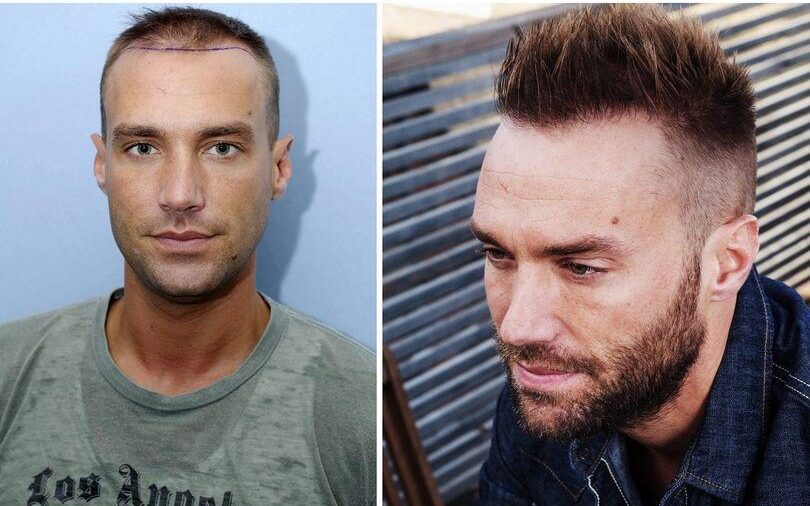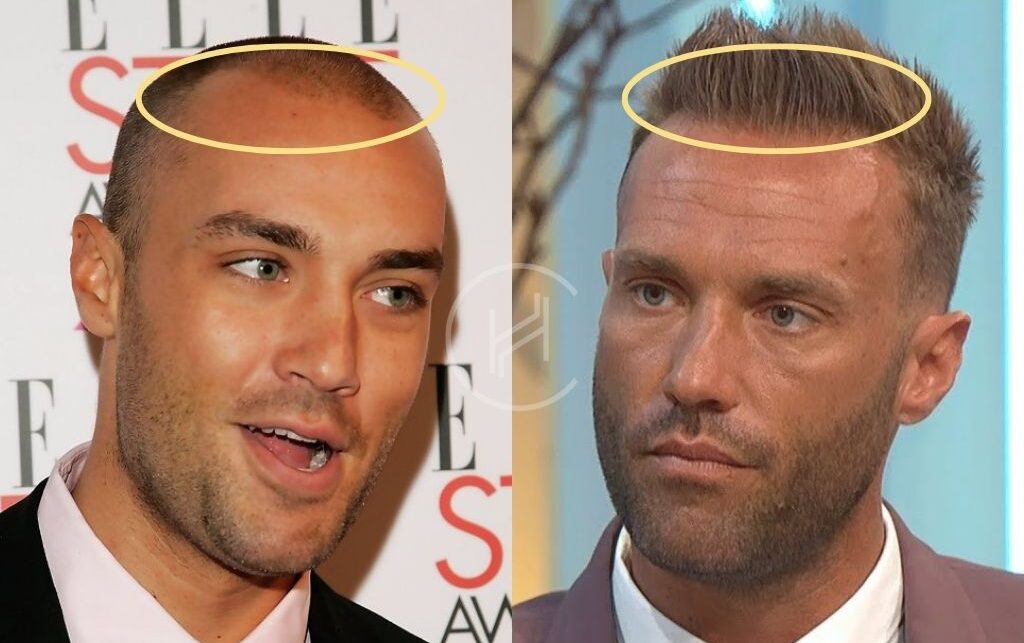
Public figures often undergo dramatic transformations, and one notable example involves a well-known personality who revitalized his appearance through advanced hair restoration. This journey from early hair loss to a confident new look showcases how modern procedures can redefine personal branding.
The transformation wasn't just about aesthetics. It represented a strategic career pivot, blending improved confidence with entrepreneurial ventures. Like other celebrities who've openly discussed their procedures, this case demonstrates how hair transplants have become an accepted solution for age-related and genetic hair loss.
This analysis explores the technical aspects of multi-phase restoration, including follicular unit extraction methods and post-procedure care. We'll examine how lifestyle factors influence results while providing actionable insights for those considering similar treatments.
Born into fame as the son of football legend George Best and model Angie Best, this celebrity forged a unique identity beyond his family name. Early 2000s photos captured his signature spiked hairstyle, but thinning hair soon became a public challenge.
His breakthrough came through reality TV, notably Celebrity Love Island (2005-2006). Unlike his father, who retained a full head of hair, he faced premature male pattern baldness—a stark contrast that fueled media attention.

Career highlights include:
| Phase | Key Milestone | Public Image |
|---|---|---|
| 2000s | Reality TV stardom | Party persona |
| 2010s | Hair loss discussions | Authentic advocate |
| 2020s | Grooming entrepreneurship | Confident influencer |
Openly addressing how balding affected casting opportunities, he became a vocal proponent of hair transplant solutions. His journey mirrors broader shifts in male grooming acceptance.
Visible changes in appearance often spark public curiosity, especially when they involve notable transformations. Photographic evidence shows a dramatic evolution from early hair loss to restored confidence.
By age 23, clear indicators emerged. The temples showed recession, creating a distinctive "M" shape. This pattern worsened with frequent bleaching treatments.
Key developments included:
Many experiencing similar hair loss patterns avoid medical treatments. Concerns about side effects often outweigh potential benefits.

The buzzcut phase masked advancing losing hair temporarily. However, career demands required a more permanent solution. Restoring the hairline became essential for maintaining on-screen looks.
Critical factors in the decision:
This marked a shift from concealment to restoration. The choice reflected growing acceptance of surgical solutions for hair loss.
Male pattern baldness isn’t just about genes—it’s a mix of inherited traits and environmental factors. For many, thinning hair stems from androgenetic alopecia, a condition driven by hormonal sensitivity and gradual follicular shrinkage.
Specialists often diagnose male pattern baldness using the Norwood Scale, which tracks progression from mild recession to advanced crown loss. Key genetic influences include:
| Genetic Factor | Impact | Timeline |
|---|---|---|
| DHT Sensitivity | Follicle shrinkage | Starts in 20s–30s |
| Norwood Stage | III to V progression | 15+ years |
| Family History | Maternal lineage link | Lifelong |
Beyond genetics, daily habits accelerate baldness. Bleaching, tight hairstyles, and stress damage follicles. For example:
Combining genetic risks with harsh lifestyle choices often speeds up the pattern of loss.
Modern hair transplants rarely achieve full density in a single procedure. Staged approaches allow surgeons to refine results while minimizing shock loss. This strategy proved effective in a high-profile restoration journey.
The initial session focused on rebuilding a natural frontal hairline. Using Follicular Unit Extraction (FUE), surgeons implanted 1,200 grafts to create subtle irregularities. This avoided an artificial straight-line look.
Key goals included:
Subsequent procedures added volume behind the hairline. Each session transplanted 800–1,000 grafts to blend new growth with existing hair. This phased method ensured seamless integration.
The crown required specialized techniques due to its circular growth pattern. Surgeons used a combination of single and multi-hair grafts to mimic natural whorls. This completed the multi-year transformation.
Understanding the science behind hair transplantation reveals why it delivers lasting outcomes. Modern techniques combine precision and artistry to mimic natural growth patterns.
Follicular Unit Extraction (FUE) is a minimally invasive method. Surgeons extract individual follicles from donor zones using 0.8mm punches. This avoids linear scars seen in older strip-harvesting techniques.
Key advantages of FUE include:
| Technique | Scarring | Graft Survival Rate |
|---|---|---|
| FUE | Minimal (dot scars) | 90–95% |
| Strip Harvesting | Linear scar | 85–90% |
Graft counts determine density and coverage. A typical session transplants 1,200–3,000 grafts, depending on loss severity. Strategic placement ensures undetectable results.
Critical factors for naturalness:
For patients considering hair transplantation, FUE offers a balanced approach. It blends science with aesthetics for transformative outcomes.
Staged hair restoration procedures offer distinct advantages over single-session treatments. For those with male pattern baldness, progressive hair loss often requires adaptable solutions. Multiple transplants allow surgeons to address evolving needs while preserving donor areas.
Public figures face unique pressures to maintain consistent appearances. Annual procedures help bridge the gap between career demands and biological realities. This strategic timing also improves graft survival rates.
Some patients decline preventative medications due to potential side effects. Multiple transplants then become the primary solution for advanced male pattern loss. Geographic factors like Turkey's affordable clinics often facilitate final procedures.
Ultimately, staged restoration balances life commitments with aesthetic goals. When planned strategically, multi-phase treatments deliver lasting success without compromising natural results.
Understanding the full financial commitment helps potential patients make informed decisions. Celebrity hair restoration often involves premium pricing for top-tier surgeons and facilities. The investment reflects both medical expertise and artistic vision.
Initial procedures in the UK (2012-2015) averaged £6,000 per session. These early treatments focused on rebuilding the hairline with Follicular Unit Extraction. London clinics typically charge £3-£5 per graft for FUE procedures.
By 2021, a strategic shift occurred with a crown procedure in Turkey. The Istanbul clinic offered significant savings at ~£2,500 for the session. This reflects regional price differences in treatment costs.
| Location | Price Per Graft | Typical Session Cost | Inclusions |
|---|---|---|---|
| UK Clinics | £3-£5 | £5,000-£8,000 | Consultation, procedure |
| Turkish Clinics | £1-£2 | £2,000-£3,500 | Accommodation, transfers |
Over nine years, the total investment exceeded £20,000 across multiple sessions. This phased approach allowed for gradual refinement while managing cost impact. Package deals at facilities like Heva Clinic help mitigate expenses.
Many clinics now offer financing options through medical credit partners. These plans make premium surgeon services accessible through monthly payments. Careful budgeting transforms hair restoration from luxury to achievable investment.
Transforming thinning hair into a full, natural-looking head of hair takes time and precision. The final results of this journey showcase how modern techniques can rebuild confidence and redefine personal image.
The full effects became visible after a 12-month maturation period. Key improvements included:
This staged approach allowed each area to heal properly. The natural look surprised many observers, as the transitions between native and transplanted hair became undetectable.
The visible change sparked media attention and fan discussions. More importantly, it influenced professional opportunities:
| Aspect | Before | After |
|---|---|---|
| TV Roles | Limited by image concerns | Expanded hosting opportunities |
| Brand Deals | Minimal grooming endorsements | Major fragrance campaigns |
| Public Perception | "Reality star with hair loss" | "Confident style influencer" |
For many men facing similar challenges, this case demonstrated how addressing hair loss can positively affect both personal and professional life. The transformation took months but delivered lasting results.
Open discussions about the process helped reduce stigma around surgical solutions. This transparency made the journey relatable to fans experiencing hair thinning.
Modern hair transplants offer life-changing solutions for those struggling with thinning hair. The journey highlights how strategic procedures can combat progressive pattern baldness while maintaining natural aesthetics.
Follicular Unit Extraction stands out for its scar-free results, ideal for public figures. Early intervention prevents advanced hair loss, preserving donor areas for future needs. Turkey has emerged as a cost-effective destination for quality procedures.
Personalized treatment plans ensure seamless outcomes that blend with existing hair. Maintenance protocols, including proper aftercare, extend the longevity of results. Consulting certified specialists remains crucial for achieving desired transformations.
This case demonstrates how advanced techniques restore confidence through subtle, permanent changes. For those considering similar paths, professional guidance makes all the difference.
